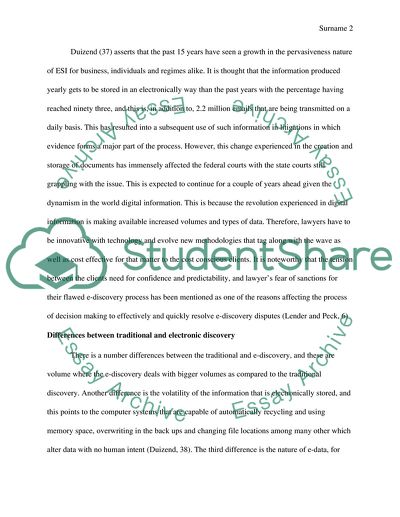Cite this document
(Electronic Discovery Issues Research Paper Example | Topics and Well Written Essays - 1500 words, n.d.)
Electronic Discovery Issues Research Paper Example | Topics and Well Written Essays - 1500 words. Retrieved from https://studentshare.org/information-technology/1774340-reflectiveresearch-paper-electronic-discovery-issues-computer-forensics-class
Electronic Discovery Issues Research Paper Example | Topics and Well Written Essays - 1500 words. Retrieved from https://studentshare.org/information-technology/1774340-reflectiveresearch-paper-electronic-discovery-issues-computer-forensics-class
(Electronic Discovery Issues Research Paper Example | Topics and Well Written Essays - 1500 Words)
Electronic Discovery Issues Research Paper Example | Topics and Well Written Essays - 1500 Words. https://studentshare.org/information-technology/1774340-reflectiveresearch-paper-electronic-discovery-issues-computer-forensics-class.
Electronic Discovery Issues Research Paper Example | Topics and Well Written Essays - 1500 Words. https://studentshare.org/information-technology/1774340-reflectiveresearch-paper-electronic-discovery-issues-computer-forensics-class.
“Electronic Discovery Issues Research Paper Example | Topics and Well Written Essays - 1500 Words”, n.d. https://studentshare.org/information-technology/1774340-reflectiveresearch-paper-electronic-discovery-issues-computer-forensics-class.


